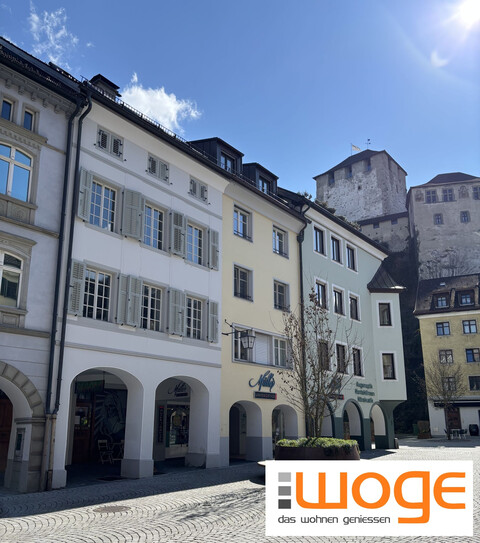Social Assistance: More Recipients, Low Costs

Last year, an average of 205,781 people received social assistance, about 8,800 more than in 2023, but still fewer than from 2017 to 2020. Total expenditures rose to 1.317 billion euros, with 60 percent of this increase due to valorization. The share of social assistance costs in the total budget is only 0.27 percent of GDP. Cuts in social assistance could not balance the budget, as this would exacerbate hunger and homelessness, according to Schumann. "Social assistance is the last safety net," she emphasized, to secure the essentials when income falls away.
Social Assistance "Mirror" of the Job Market Situation
Schumann pointed out that the situation in the job market remains tense. This is also noticeable in the developments in social assistance. Of the approximately 8,800 additional recipients, nine out of ten were registered as job seekers with the Public Employment Service (AMS), according to ministry data. Schumann also emphasized the particular problems faced by those affected by inflation. The inflation rate was 4 percent in October 2025. For the poorest ten percent of the population, however, inflation is 0.4 percentage points higher monthly than for the wealthiest ten percent, according to data from the Institute for Advanced Studies (IHS) cited by the Ministry of Social Affairs. The reason for this is the consumption structure: low-income earners must spend almost their entire income on housing, energy, and food, which are the areas with the highest price increases.
Only 43 Percent of Social Assistance Recipients Are Employable
Of the social assistance recipients, only 43 percent are employable. Of these, 35 percent are registered as unemployed, eight percent are employed - and receive social assistance as so-called "top-ups" (because their income is too low). The largest group of recipients are children - at 37 percent. After job seekers and those already employed, another eight percent are not employable. Seven percent are retired (and "top-ups" there), and another five percent cannot participate in the workforce due to caregiving responsibilities. Fifty-three percent of the recipients come from third countries, 38 percent are Austrian citizens. Forty-four percent have asylum or subsidiary protection status. The average duration of receipt was 9.1 months.
Regional Differences in Social Assistance
The majority - around 70 percent - of all social assistance and minimum security recipients live in Vienna. In the federal capital, there was a five percent increase in 2024, while federal states like Tyrol (-0.2 percent) or Vorarlberg (-1.8) reported slightly declining numbers. The Vienna ÖVP once again criticized that Vienna is the "social assistance magnet of Austria" and called for cuts in minimum security in the city. Although employment grew the most in Vienna in 2024 compared to other federal states - only thanks to the federal capital was there an overall employment increase, according to the ministry. The fact that the number of minimum security recipients still grew has several reasons: Firstly, population growth is concentrated here, and the population in Vienna is "very young," which also puts strong pressure on the job market.
Additionally, social assistance recipients in cities tend to have particularly poor health, while at the same time, good healthcare draws those affected to the cities. Cities are also particularly affected by immigration - both from abroad and internal migration. In Styria, 60 percent of recipients live in Graz, and in Salzburg, a similarly high proportion live in the city of Salzburg. The monthly benefit amount in 2024 was 505 euros per person. The range extended from 431 euros in Burgenland to 522 euros in Vienna.
Social Assistance Recipients: Problems with Housing Costs
According to the EU-SILC survey 2022-2024, individuals in social assistance households are three to five times more likely to be affected by material deprivation than the average. 33 percent cannot pay rent or utility costs on time - for households without assistance, this is only five percent. 30 percent cannot afford a car, 18 percent cannot keep their home adequately warm, and seven percent do not have internet access. 24 percent of recipients live in overcrowded apartments, and 28 percent in homes with dampness or mold. "Many social assistance households pay similarly high housing costs as others - but live in smaller spaces and often in poorer conditions," said Schumann. The average annual income of households receiving social assistance was 19,800 euros, compared to 31,300 euros in households without assistance, according to the ministry.
Many Chronically Ill and Disabled Among Social Assistance Recipients
Health limitations also lead to financial difficulties: More than half (51 percent) of people of working age receiving social assistance are chronically ill. 22 percent of recipients of working age are people with a disability that significantly impairs them.
Schumann: Social Assistance Necessary for Security, Against "Tunnel Vision"
"A responsible policy cannot afford and should not want to save on the poorest," emphasized Schumann. She knows that the focus is very often on high financial benefits for families - which "rightly" causes anger and misunderstanding. However, this "tunnel vision" must be abandoned: Social assistance is received by single pensioners, single parents, or people with disabilities, as well as so-called "top-up" recipients whose income or pension is not enough to survive. "These people rely on social assistance," stressed the department head. "Poverty is not a marginal phenomenon," she said. It affects working people just as much as pensioners or people with health limitations.
In the currently negotiated reform of social assistance, the goal of standardization is the focus, Schumann reiterated. To implement the - currently still vague - project of a "future security for children," a study has been commissioned to investigate the current structure of family benefits. This is expected to be available by mid-2026, according to Schumann.
NGOs Against Cuts in Social Assistance
Social organizations spoke out against cuts in social assistance on Wednesday. Even now, those who rely on it often cannot afford the essentials, said Caritas President Nora Tödtling-Musenbichler. Volkshilfe Director Erich Fenninger pointed to rising prices and a difficult labor market situation. The cost of 0.27 percent of GDP for social assistance is "a small investment for protection against absolute poverty."
Fenninger demanded the inclusion of social organizations in the reform negotiations. The outcome should be a nationwide uniform social assistance with minimum standards and a basic child security, appealed Caritas. Current grievances must be considered in the reform, advocated the Poverty Conference. For example, housing costs are unaffordable, hardship rules are missing, and decision deadlines at the office are too long. Amnesty International Austria criticized the planned integration phase, which targets immigrants and during which the full amount of social assistance is not to be granted. This would exclude an entire group from social assistance.
Plakolm Points to High Foreign Share Among Social Assistance Recipients in Vienna
Integration Minister Claudia Plakolm (ÖVP) emphasized that the majority of social assistance recipients live in Vienna, do not originate from Austria, and receive the benefit long-term. Large migrant families shape the system. "Social assistance no longer protects those who have worked once, but those who will never work without a mandatory integration program," said the head of the department.
Those who receive support from the state must also actively work on their integration - "and on supporting themselves and their family." In the new social assistance, it must be "unmistakably clear" that it is only available temporarily and "as a last safety net." Plakolm emphasized that only 37.8 percent of recipients have an Austrian passport, while 62.2 percent are "non-Austrians."
Regarding the high proportion of children in social assistance, the minister said this does not arise "because Austrian families are becoming impoverished," but "because migrant families bring significantly more children": 36.7 percent of social assistance recipients overall are children or adolescents. Among asylum seekers and those entitled to protection, this proportion is 44 percent, while among Austrian families it is only 30 percent.
Social Assistance: Greens for Uniform Minimum Rates and Individual Support
The Green social spokesperson Markus Koza pointed out that the removal of certain aids, such as the end of the climate bonus or the education bonus, particularly affects socially excluded people. "From 2026, further cuts by the government - such as the lack of valorization of family benefits - will worsen the living situation of people in need," said Koza. Serious poverty reduction must rely on nationwide uniform minimum rates, individual support with access to necessary in-kind benefits, a uniform basic child security, and above all effective advice and support for those affected.
(APA/Red)
This article has been automatically translated, read the original article here.
Du hast einen Hinweis für uns? Oder einen Insider-Tipp, was bei dir in der Gegend gerade passiert? Dann melde dich bei uns, damit wir darüber berichten können.
Wir gehen allen Hinweisen nach, die wir erhalten. Und damit wir schon einen Vorgeschmack und einen guten Überblick bekommen, freuen wir uns über Fotos, Videos oder Texte. Einfach das Formular unten ausfüllen und schon landet dein Tipp bei uns in der Redaktion.
Alternativ kannst du uns direkt über WhatsApp kontaktieren: Zum WhatsApp Chat
Herzlichen Dank für deine Zusendung.








